Right at Home: Why Chickens?
- andreasachs1
- May 31, 2022
- 5 min read
Updated: Jun 1, 2022
By Victoria Rolfe / Red Hook, N.Y.
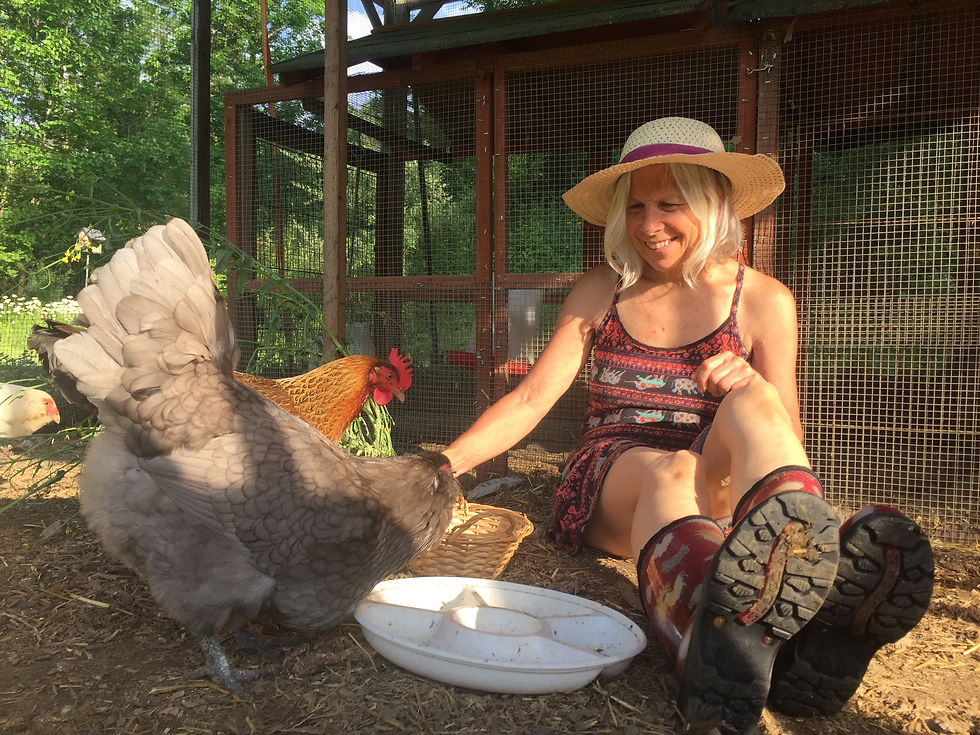
Homesteading on a vegan diet is pretty easy. No messy livestock to deal with! We only eat plants. But here at the Rolfe household, we do make one exception to that vegan rule. And that is eggs from our beloved chickens. That is the only animal product that we eat, and only from our own adorable and happy flock.
Unlike with other dietary animal products, eating eggs does not involve any cruelty to the animals. They do not have to die an early death or be separated from their babies to have their milk extracted from them for our consumption. Just for the record, chickens are not proprietary over their eggs. Once they lay eggs, they move on and forget about them. The only time they care is when a chicken goes broody and decides she wants to be a mom. This chicken will sit on all the eggs in the egg box, not just hers. She doesn’t care who laid them. She just has the urge to hatch and care for some baby chicks.
In fact, it might be said that our own chickens are spoiled rotten. They live the life of Riley, er, Reilly (which happens to be one of their names). It is incredibly easy to care for chickens. They require almost no time or effort. All they need is a safe place to live and food and fresh water and a soft, private place to lay their eggs.
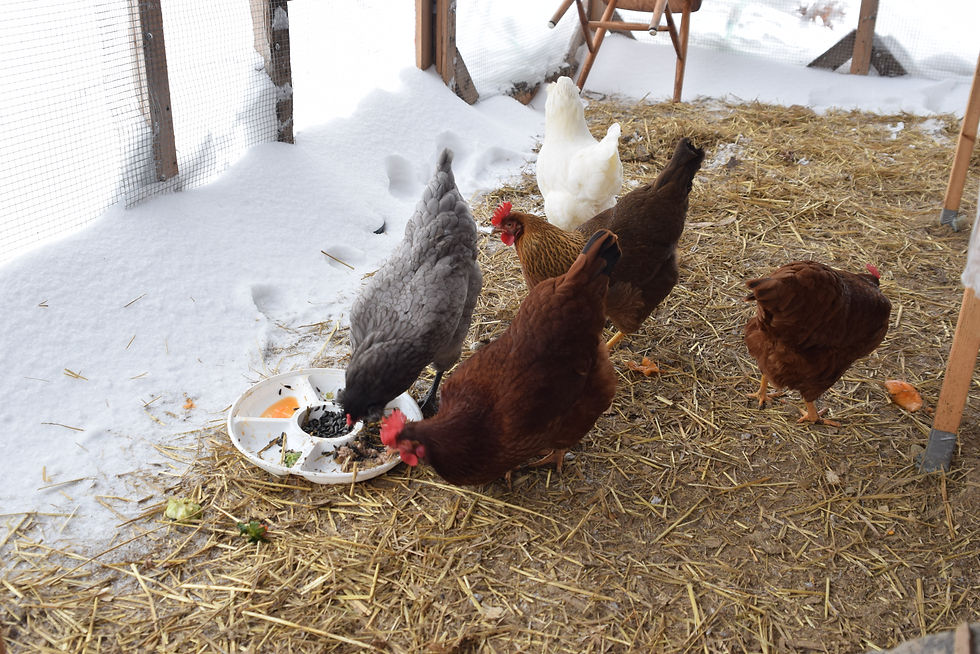
You can either buy them as chicks and raise them yourself or buy them as adults or pullets (just about fully grown and about to start laying eggs). We chose to do the former because well, have you ever seen little baby chicks?
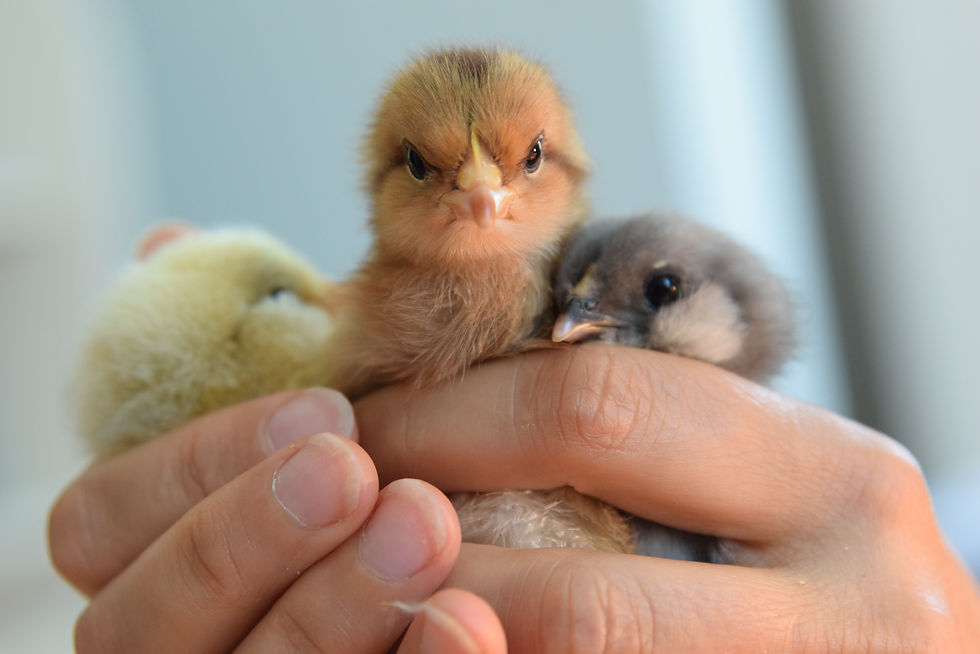
Raising them is easy-peasy too. They just need a confinement (we used a plastic storage container), and warmth. They sell heat lamps for chicks, but we just used a light my son had for filming purposes suspended above them. Then just chick food and water and watch them grow. Of course, you must check them regularly for problems. Fortunately, we didn’t have any. And, this is the fun part, if you want them to be personable you need to handle them daily. We had plenty of kids and their friends to help out with that part.
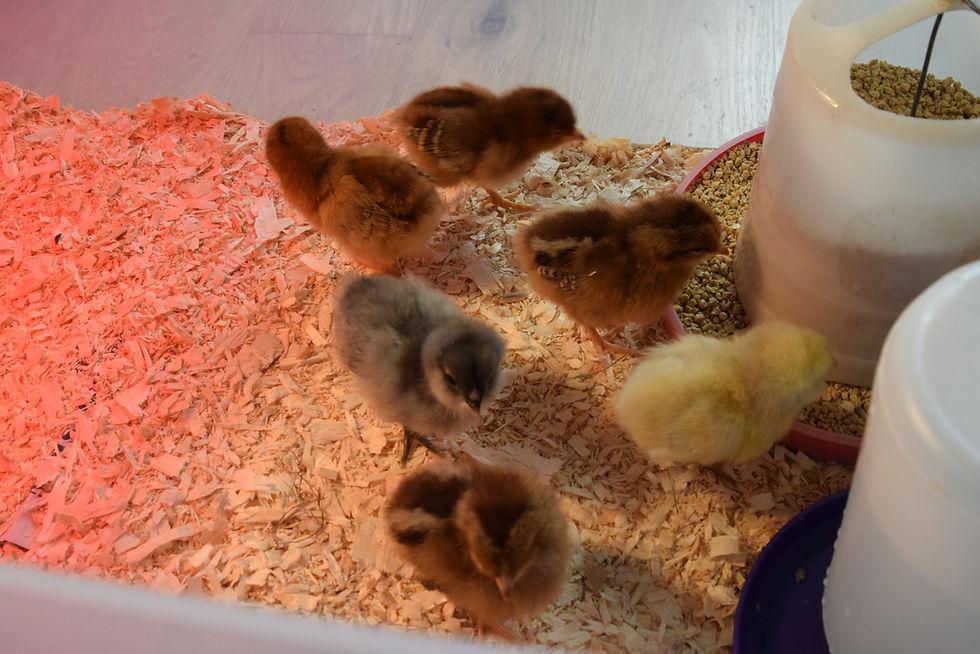

They soon outgrow their little container and need to go into something larger before they are ready for their outside coop. At this point we put ours in an old kiddie pool that we set up in the basement and surrounded it with chicken wire to keep them in. It’s a very good idea to provide them with something to perch on (sticks from the backyard will do). It was quite delightful to watch our little fledglings master this important chicken skill.
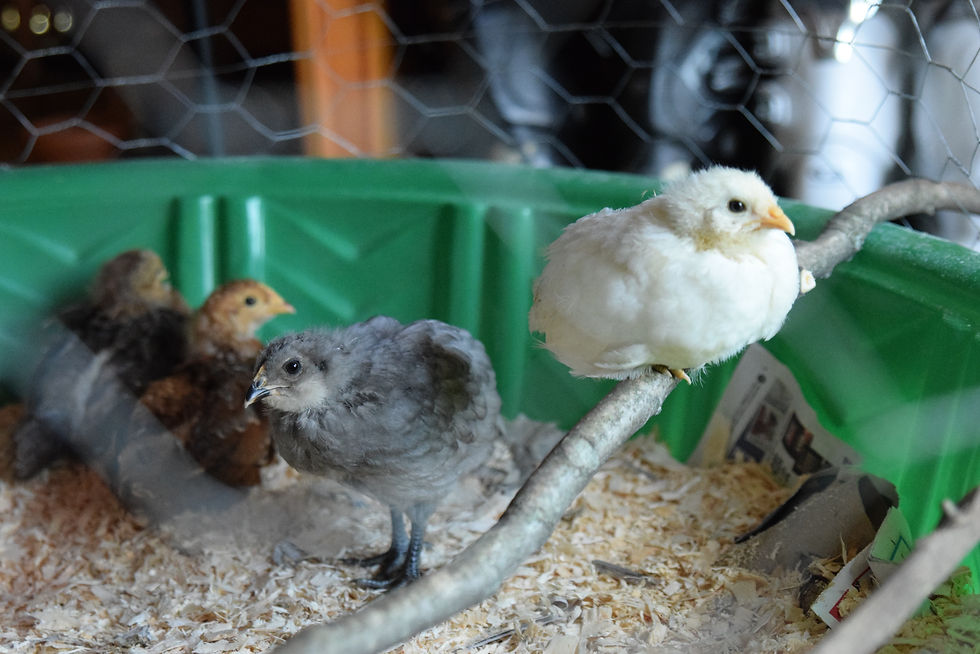
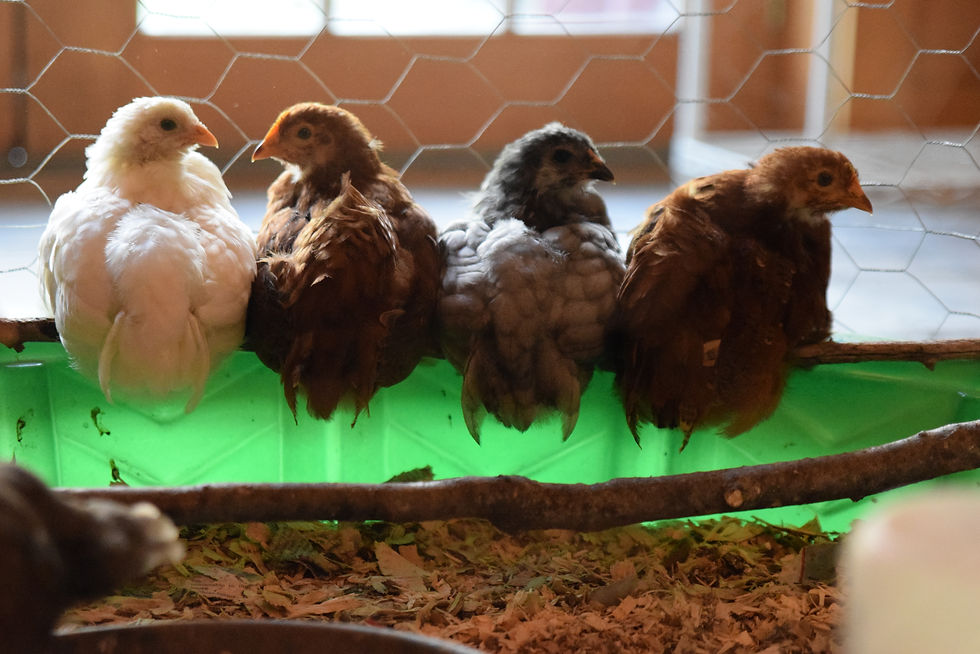
When the babies are fully feathered (at about five weeks old), they are ready to try the coop. We let them play out there in the coop and run for a few hours each day to get used to it. Then after about a week of this (provided the nights are reasonably warm by this point), they are ready for their permanent relocation. At first you must physically put them into their sleeping quarters before you close them in for the night. But in a few days’ time, they readily go in at sundown and will keep up this habit for the rest of their lives.
The most important aspect of the coop and run are that they are predator-proof. We were given a small coop from some friends who were expanding their flock and getting a bigger coop (this is called “chicken-math”). It’s sort of like potato chips. Once you have a few you just keep craving more and more.
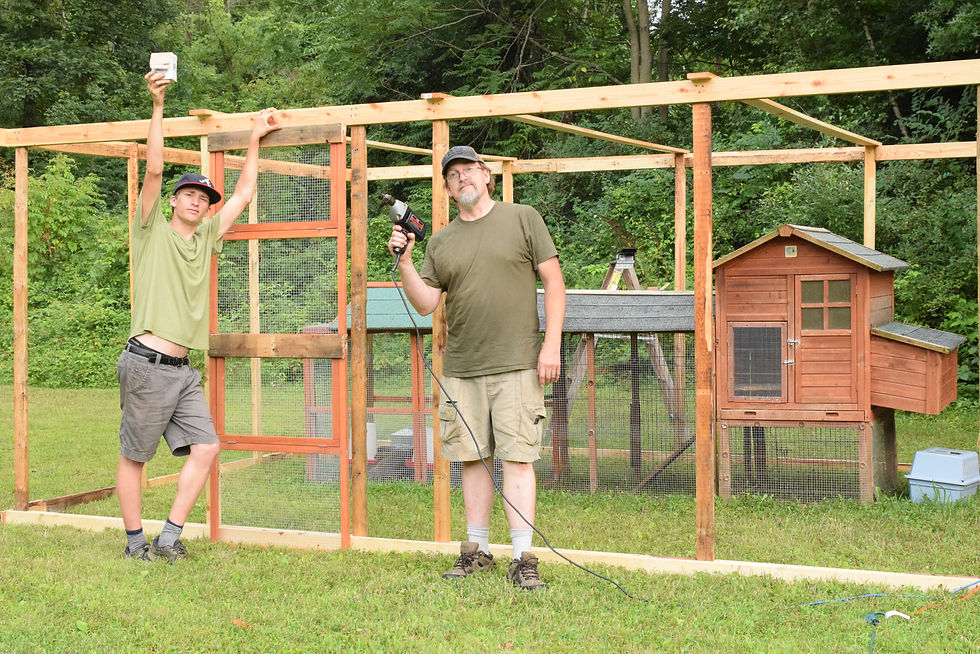
The little coop is a safe place for the chickens to sleep, all closed-up and safe for the night, but they need to have someplace to run around during the day. We live in an area replete with racoons, foxes, coyotes, fisher cats (large weasels), hawks, and others who would just love a good chicken meal, so we did not feel comfortable letting them free-range throughout the day. To that end we used old pallets and other lumber to build a 12’ x 16’ structure around the coop for them to safely play in during the day. We surrounded it with sturdy hardware cloth (the product called “chicken wire” is not strong enough to keep a hungry predator out). We also extended the wire on the ground for 18” around the enclosure to discourage digging animals.
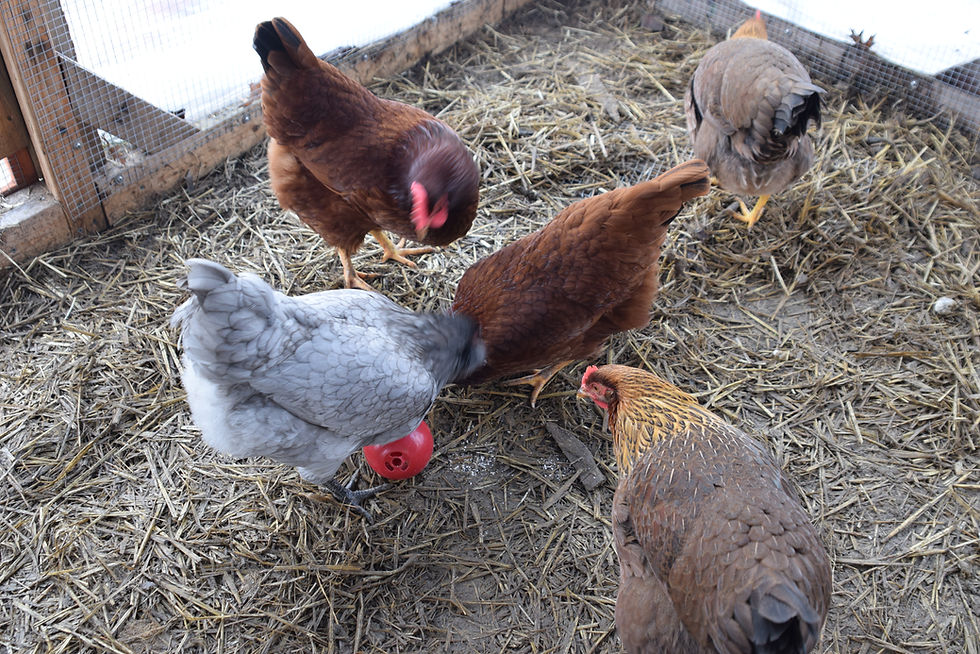
Now all we need to do is to keep their feeder and water bottle full, clean out their coop once a week and collect the beautiful eggs each day. Unlike the typical brown or white eggs sold in grocery stores, different breeds of chickens lay a variety of colors ranging from light blues and greens to dark chocolaty browns, and some even add speckles for added artistic effect.

In addition to their straight chicken feed fare, we spoil our chickens with a daily snack of all kinds of treats. Some of their favorites include greens, cantaloup, chickpeas (aptly named it seems), sunflower seeds, meal worms, oatmeal, bread, and spaghetti. The list goes on and on.
Although we do not free-range them on a daily basis, we do let them out of their enclosure for occasional outings. We do this a few hours before sunset, as they naturally will return to their coop to sleep in the evening, so we do not have to try to wrangle them back inside. This is obviously a risk (predator-wise) but so far, we haven’t had any disasters. And it is so fun to watch them enjoying their adventures!

I highly recommend raising chickens to anyone who has the space (and it doesn’t take much) and the inclination to do so. You won’t be disappointed! Our sweet feathered friends give us many moments of joy and serenity in our little haven away from a world sorely lacking in these things. And that old chicken-math just might get to you too. I know it has for us. We are already contemplating how we can get our hands on a bigger coop.
A long, long time ago, after the birth of her third child, Victoria made the life-changing decision to leave the work world behind and devote herself to being a full-time mom and homemaker. Along with her new title of Domestic Engineer, she took on the role of the Chief Home Economist for the family.
At first, it was scary to try to live on less than half their income, but Victoria found that she not only rose to the challenge but thrived in the enjoyment of learning to live their best life with limited resources. She embraced this new frugal lifestyle of the at-home-mom and went on to add a fourth child to the mix. And their family was complete.
Along the way she acquired a great deal of wisdom in how to not only avoid debt, but pay off mortgages early, buy cars for cash, travel on a shoe-string budget, and send kids to college with no student loans, all while also saving a tidy nest egg for retirement. She currently educates others in these skills through her business Bright Future.
Now living the life of a modern homesteader in the Hudson Valley, New York, Victoria has added gardening to her list of skill sets as she grows many of her own vegetables to supplement her family’s primarily vegan diet. And she has come to realize that this waste-not, want-not, carbon-friendly, sustainable life she is living is not only benefiting her own family but also our Mother Earth, and that each of us has the obligation to live a responsibly sustainable life not only for ourselves, but for the greater good of our community, and our planet. We can all do this one household and backyard at a time. We are the world! And it all begins right at home.
Victoria can be reached at brightfuture2budget4@gmail.com
Comments